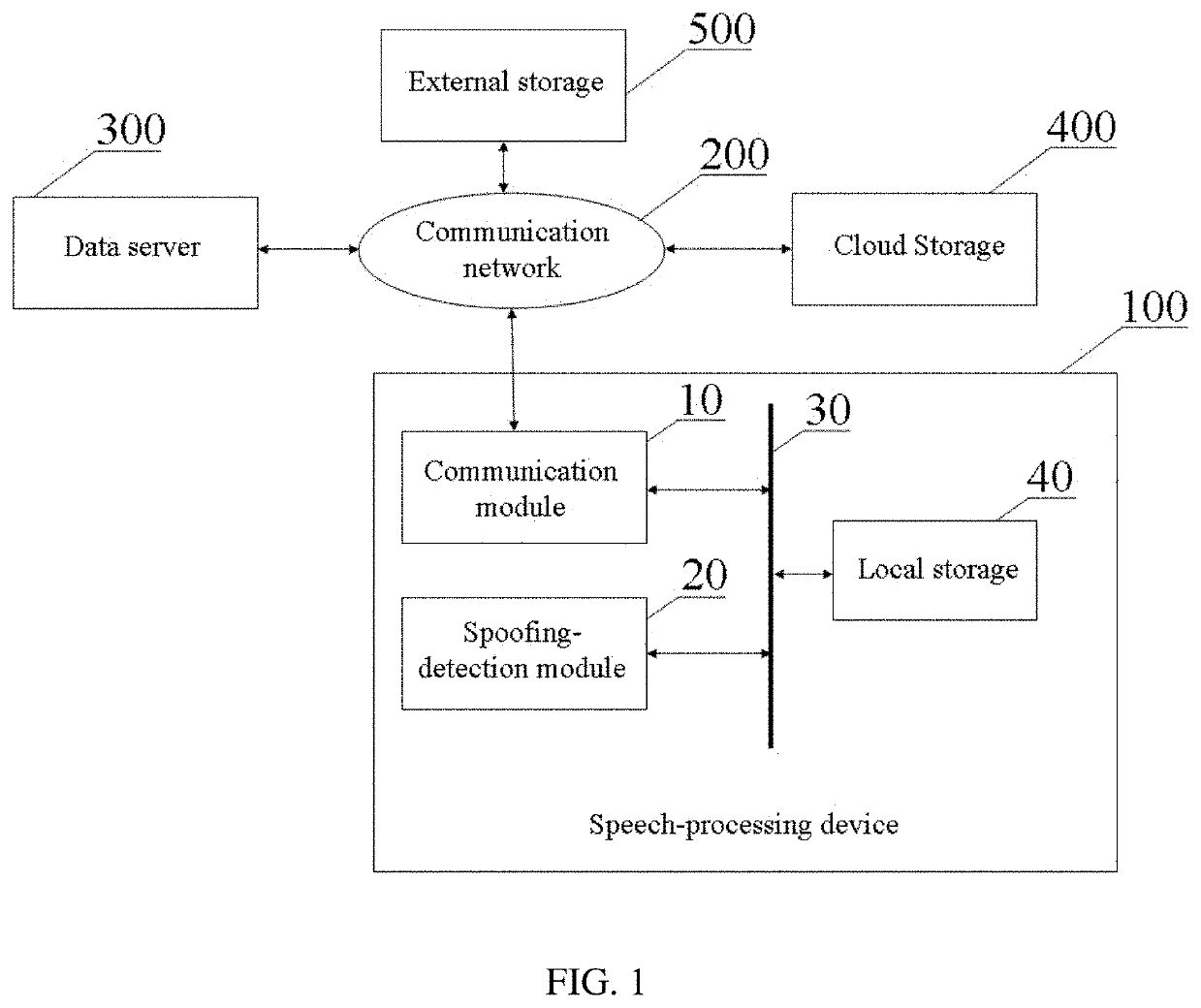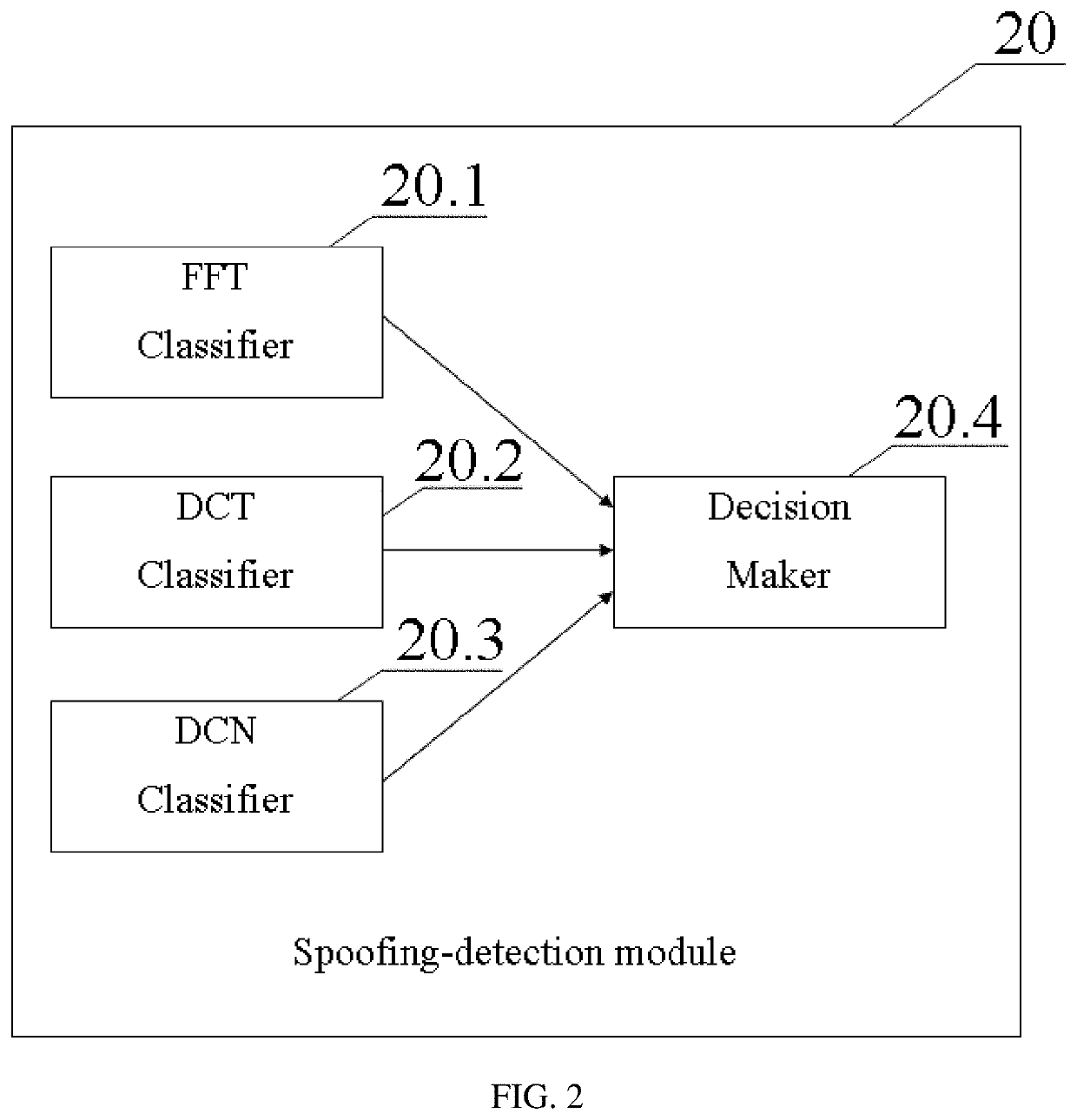Methods and devices for detecting a spoofing attack
a technology of spoofing attack and detection method, applied in the field of anti-spoofing system, can solve the problems of increasing the false acceptance rate (far), the potential point of vulnerability of speaker recognition system, and the vulnerability of automatic speaker verification system, so as to improve the detection efficiency of spoofing attack
- Summary
- Abstract
- Description
- Claims
- Application Information
AI Technical Summary
Benefits of technology
Problems solved by technology
Method used
Image
Examples
Embodiment Construction
[0056]The present invention will now be described more fully with reference to the accompanying drawings, in which example embodiments of the present invention are illustrated. The subject matter of this disclosure may, however, be embodied in many different forms and should not be construed as being limited to the embodiments set forth herein.
[0057]The following example embodiments of the present invention are provided for detecting spoofing attacks when human speech signals are used. However, the present invention is not limited to processing human speech signals; in particular, the present invention is also applicable for detecting spoofing attacks when other sound or voice signals are used.
[0058]FIG. 1 is a block diagram illustrating a speech-processing device 100 according to a first aspect of the present invention. The speech-processing device 100 is intended to detect different spoofing attacks and comprised of two main functional modules: a communication module 10 and a spoo...
PUM
 Login to View More
Login to View More Abstract
Description
Claims
Application Information
 Login to View More
Login to View More - R&D
- Intellectual Property
- Life Sciences
- Materials
- Tech Scout
- Unparalleled Data Quality
- Higher Quality Content
- 60% Fewer Hallucinations
Browse by: Latest US Patents, China's latest patents, Technical Efficacy Thesaurus, Application Domain, Technology Topic, Popular Technical Reports.
© 2025 PatSnap. All rights reserved.Legal|Privacy policy|Modern Slavery Act Transparency Statement|Sitemap|About US| Contact US: help@patsnap.com



